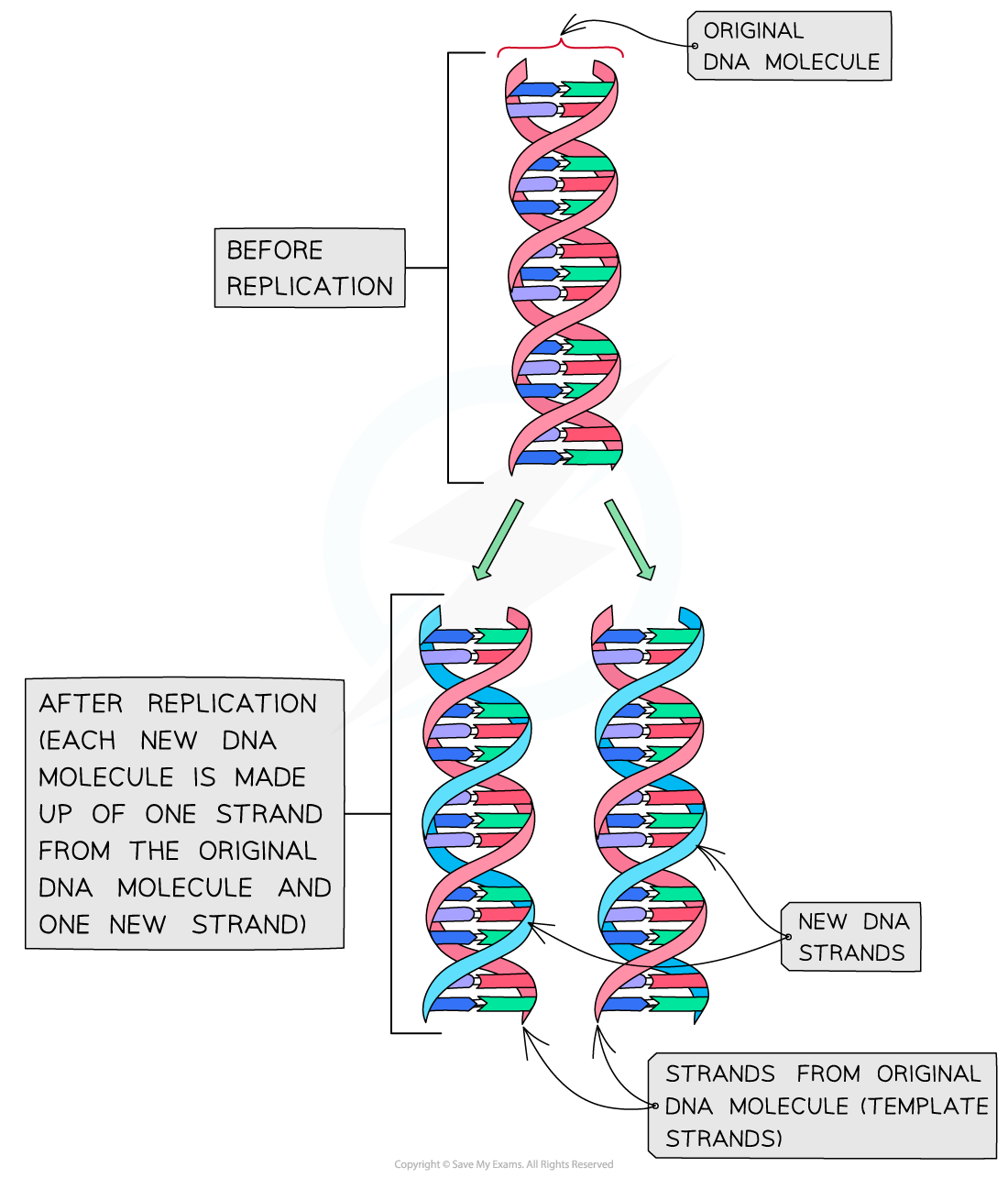DNA Replication
- The replication of DNA is semi-conservative and depends on complementary base pairing
- Semi-conservative means that one strand of the 'parent' DNA is kept in the 'daughter' molecule
- This is called the template strand
- The other half is determined by the code on the template strand and is built up from free nucleotides in the nuclear space around the chromosomes
- This takes place in the nucleus
- Nucleotides are added one by one to the new strand according to the rules of complementary base-pairing
- If an adenine is the next exposed base on the original strand, a thymine nucleotide is added and vice versa
- If a cytosine is the next exposed base on the original strand, a guanine nucleotide is added and vice versa
- Hydrogen bonds can only form between the template strand and the new strand if the correct bases are paired up
- Therefore, the new DNA molecule has kept half of the parent DNA and then used this to create a new, daughter strand
Exam Tip
Make sure you don’t confuse ‘parent cell’ with ‘parent organism’. A parent cell is any cell in the body that divides into two cells and the terminology is used to refer to the ‘original’ cell that the DNA came from before it was split and replicated semi-conservatively.





